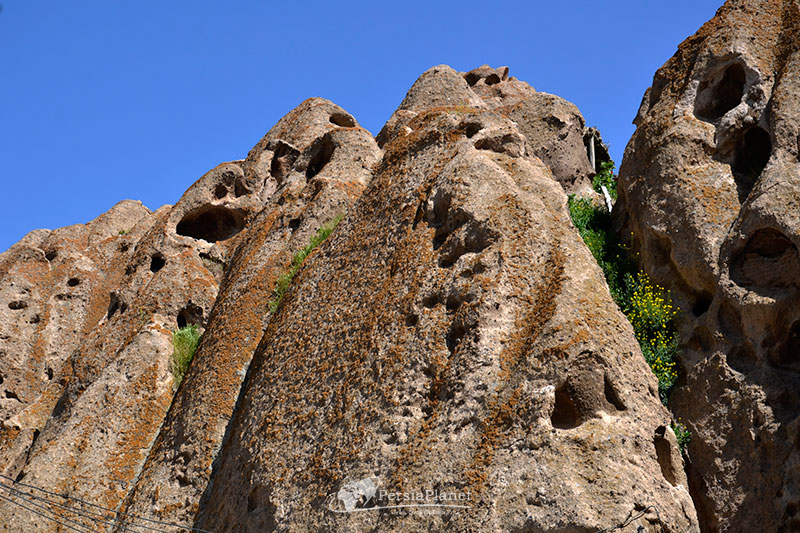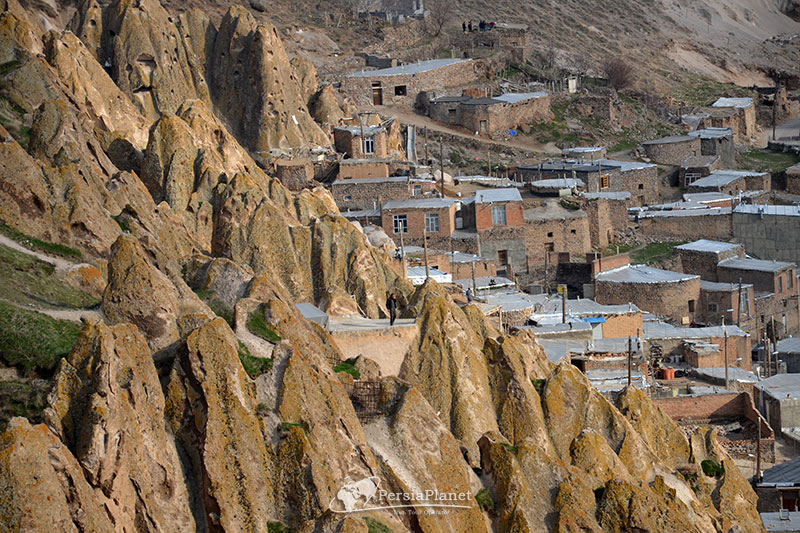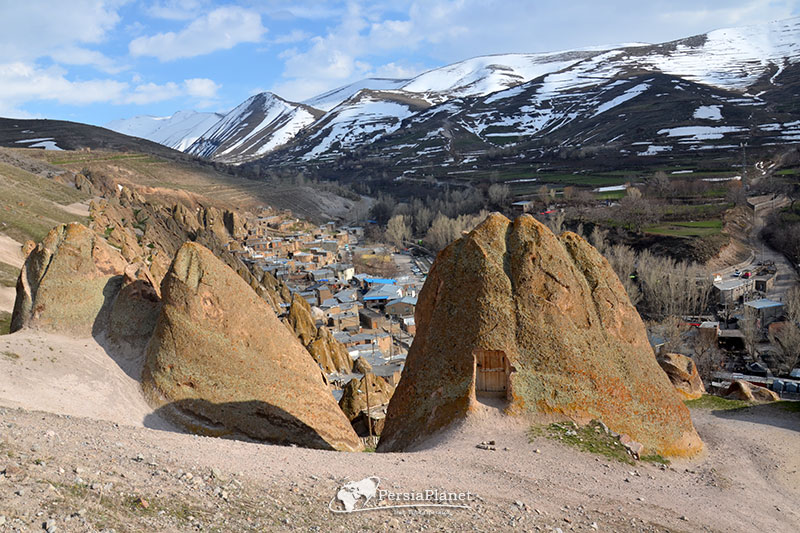Kandovan Village

Imamzadeh Davood Trekking Path
November 5, 2020
Arasbaran Forest
November 7, 2020Kandovan, 50 km southwest of Tabriz; It is one of the villages of Sahand district, which is located 18 km south of Oskoo, on the green slopes of Sultan Daghi. According to the general population and housing census of 1996, this village has 137 families and 750 people who are engaged in agriculture, animal husbandry and handicrafts. What gives Kandovan its ancient identity is the existence of 117 families and dwelling houses within the conical and pyramidal rock-shaped masses. The villagers of Kandovan have built their own houses, cages, warehouses and workshops inside these masses.
Rock architecture indicates scenes of human struggle with nature and the use of natural rocks. In ordinary architecture, gypsum, lime and clay form the main body of the building with building materials, while in rock architecture, the desired space is revealed inside the rock mass and the stone, like the body, is a strong layer in Creates around this space.
Due to the volcanic interactions of Sahand Mountains; a view has been created in one of the most pleasant and airy parts of Iran, which seems more like a dream. Dozens of multiple, pair, single, conical and spindle-shaped borders; It has embodied one of the best natural landscapes in Iran.
Molten material has leaked from the craters of the Sahand volcano and other surrounding volcanic mountains for thousands of years. These lavas have accumulated over the centuries and gradually a crust of rock has formed on them. Volcanic molten masses and lavas have been deformed and bounded by winds and storms over thousands of years. Gradually, the less hard parts of the edges are shed and the harder parts remain, creating the current situation that is more like a natural miracle. Excessive wind and rain, especially in the borders of the entrance area of the village, are more effective and cause a lot of damage to them, while in the east and the end of the village, due to the high hills, the borders remain higher and healthier.
Kandovan has a mosque, bath, school and Asia, which is one of the largest borders of the village. Due to the special conical shape, most borders with different classes are not connected to each other from the inside. Boundaries generally have two floors, and in some cases three or even four floors.
Mehdi Gholami.

















